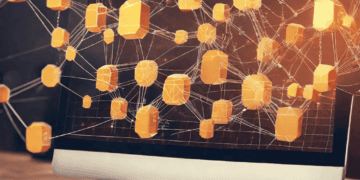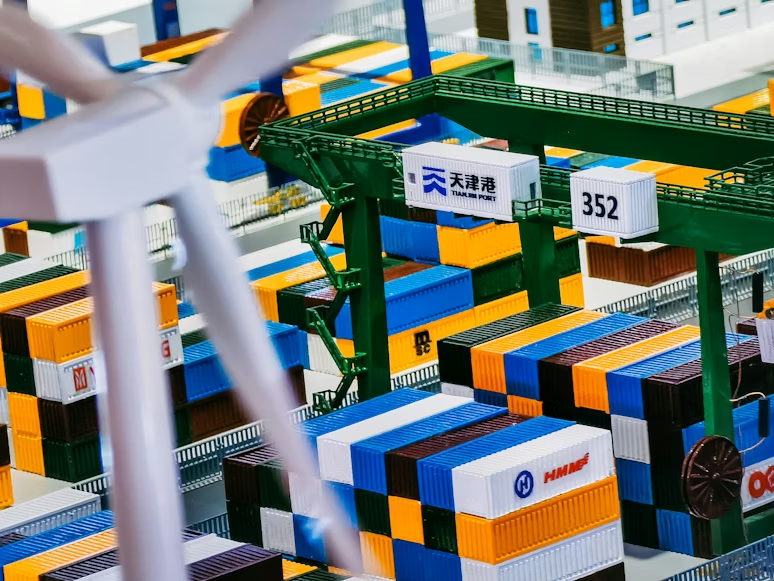Distributed ledger technology, encompassing blockchain, stands as a transformative innovation with the capacity to influence an array of industries and technologies. It is perhaps most renowned for underpinning various digital assets, such as cryptocurrencies, stablecoins, and central bank digital currencies (CBDCs). However, its applicability extends far beyond the realm of digital finance, into areas like artificial intelligence, traditional finance, energy, tech, media, supply chain, logistics, retail, healthcare, real estate, transportation, manufacturing, and more.
I. Distributed Ledger Technology (Including Blockchain)
a. Distributed Ledger Technology
Distributed ledger technology, often referred to as blockchain technology, operates by using independent digital systems to record, share, and synchronize transactions. These transaction details are simultaneously recorded on multiple network nodes. Each recorded transaction is represented as a token on the distributed ledger, which can serve to identify ownership of both fungible tokens (e.g., cryptocurrencies, stablecoins, and CBDCs) and non-fungible tokens (like tokenized assets). This technology leverages digital means to achieve the distribution of identical ledger versions across separate computers or servers.
To provide a visual contrast, the Congressional Research Service (CRS) and U.S. Government Accountability Office (GAO) have created a useful illustration showcasing the differences between centralized and distributed ledger systems.
b. Blockchain
Blockchain, a subtype of distributed ledger technology, consists of a distributed digital ledger comprising cryptographically signed transactions organized into blocks. Each block links to the previous one after validation, forming a chain of blocks. As new blocks are added, earlier ones become more challenging to modify, rendering them immutable. In essence, blockchain ensures the security of data, making it resistant to alteration or destruction.
There are two principal types of blockchain: permissionless and permissioned. In a permissionless blockchain, anyone can validate transactions, while in a permissioned blockchain, transaction validation is restricted to an authorized group designated by the system’s operators.
II. Distributed Ledger Technology Use Cases
Distributed ledger technology, particularly blockchain, offers a set of core benefits, including immutability, transparency, and decentralization, across various sectors. The significance and applicability of these advantages vary according to specific use cases, as outlined below.
a. Digital Assets
Digital assets encompass a broad category that includes all CBDCs, cryptocurrencies, stablecoins, tokenized assets, and other representations of value issued or represented digitally through distributed ledger technology. These assets may serve as securities, commodities, derivatives, or financial products and can be exchanged via digital asset trading platforms, both centralized and decentralized.
b. Artificial Intelligence
Artificial intelligence (AI) encompasses computerized systems capable of learning, problem-solving, and goal achievement in uncertain and varying conditions. AI has found a growing array of applications, particularly in large language models, across various sectors. The transparency, immutability, and decentralization of distributed ledger technology can address challenges associated with AI by enabling tracking of training data, recording data generated by AI models, and enhancing data security and integrity.
c. Other Use Cases
Beyond digital assets and AI, the versatility of distributed ledger technology, particularly blockchain, is evident in its application in traditional finance, energy, tech, media, supply chain, logistics, retail, healthcare, real estate, transportation, manufacturing, and more. Regardless of the use case, the primary advantages remain constant—immutability, transparency, and decentralization.
III. Next Steps
The potential of distributed ledger technology to significantly impact industries, technologies, and the global economy necessitates a thorough understanding of its use cases and the associated benefits and challenges. Stakeholders, whether directly involved or indirectly affected, should also be aware of the evolving legislative, regulatory, and compliance frameworks governing this transformative technology.
Breaking supply chain news is just a click away at The Supply Chain Report. Enhance your knowledge of international trade at ADAMftd.com with free tools.
#DistributedLedgerTechnology #Blockchain #Cryptocurrency #Stablecoins #CBDCs #ArtificialIntelligence #DigitalAssets #Immutability #Transparency #Decentralization #SupplyChain #Logistics #Healthcare #Finance #Tech #Media #Retail #RealEstate #Transportation #Manufacturing #TokenizedAssets #PermissionedBlockchain #PermissionlessBlockchain #AIinBlockchain #BlockchainUseCases #FutureOfTech

















